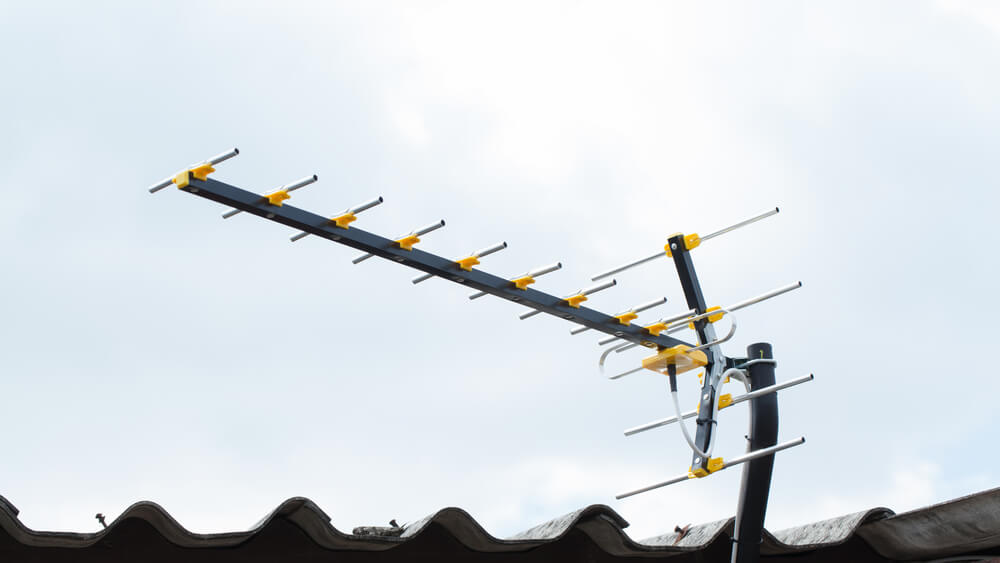Having a reliable Digital TV antenna in today’s world of digital media, where high-definition television and streaming services are widespread, can make a big difference in how you spend your free time and how much you enjoy your leisure activities.
Setting up a home antenna may seem difficult to you, but with the correct guidance and a little effort, you can receive a lot of networks and have crystal-clear reception without having to pay a monthly fee.
Here are the best tips for Installing a Digital TV Antenna
How to Select the Correct Antenna Type
Selecting the appropriate kind of antenna for your house is the most crucial piece of advice for installing one. There are several types of Digital TV antennas available in the market.
Select an antenna based on your preferred style, signal strength, and location. Selecting the option that best suits your needs requires a little assessment.
- Indoor vs. outdoor Digital TV antennas: when it comes to installation, Indoor Digital TV antennas are simpler to install, but their broadcast range is less than that of outdoor antennas. However, installing and maintaining outdoor Digital TV antennas requires more labour, but the benefits are greater signal reception and a greater selection of programs.
- Directional vs. omnidirectional Antennas: Compared to omnidirectional antennas, directional antennas are ideal for receiving signals from specific locations because they don’t require precise alignment with transmitting towers. Omni-directional antennas can pick up signals from all directions, providing you with full coverage despite being simpler to install and set up.
- Standard vs. Amplified Antennas: Standard antennas are simpler to set up, but amplified antennas can increase signal strength. To avoid excessive amplification leading to signal distortion, it is important to carefully manage amplified antennas.
- Single-element antennas: These are simpler to operate but might not be as effective at picking up particular signals as multi-element antennas. The gathering and placement of a multi-element antenna’s parts enable it to select specific frequencies and, more effectively, avoid signal obstructions.
Consider your location and signal strength
You need to know how close you live to broadcast towers and how strong the signals are in your area before you install your Digital TV antenna. Apps and online resources can be used to find nearby towers and assess signal strength.
Location:
The antenna layout is determined by its desired placement.
If you place the Digital TV antenna inside close to a window that faces broadcast towers, the procedure is rather easy. All you need to do is pick a spot with plenty of signal exposure.
It is important to make sure outdoor antennas, such as those on rooftops, are mounted firmly and shielded from the environmental elements. It necessitates more challenging installation techniques, such as grounding and anchoring.
Please keep in mind that other wires heading to or passing over your home could interfere with reception when placing your antenna.
Signal Strength:
Depending on the strength of the radio signals in your area, the Digital TV antenna will perform better or worse.
Your Digital TV antenna may function well with simpler layouts, such as bidirectional antennas if you live in a region with strong signal reception. It may only be necessary to make small adjustments.
In areas with weaker signals, installation requires more careful attention to detail. To increase coverage, you might require signal boosters, precise alignment, and directional antennas.
In both situations, selecting the appropriate antenna type and employing the best installation techniques depends on your understanding of the unique characteristics of your locality and the signal conditions.
Gather the necessary tools and equipment
A set of tools and equipment that will enable you to complete the installation of a Digital TV antenna without stopping is necessary for success. These might be a drill, a good coaxial cable, connectors, grounding cable, a screwdriver or wrench, a ladder or stepladder, cable ties or clips, weatherproofing compound, sealant, etc.
You won’t have to interrupt the work in the middle to search for these supplies and tools if you gather them before you begin.
It facilitates a smoother installation process and frees you up to concentrate on the steps without having to deal with unplanned delays or breaks. Having everything ready will also save you frustration and time.
Use all the safety equipment necessary to prevent injury to yourself if you plan to climb onto your roof, including height safety training.
Consider the location and height of the antenna
Important aspects that have a big influence on how well your installation goes are the height and positioning of your Digital TV antenna. A more thorough understanding of their impacts guarantees superior signal transmission and reception.
Antenna Height: The height at which your antenna is installed has a significant impact on signal reception.
A Digital TV antenna is typically positioned higher about a television tower, the better its line of sight is. This elevated location aids in removing obstructions that may impede or deteriorate signals, such as hills, trees, and buildings.
By positioning the antenna higher, more signals can be picked up by the antenna, increasing channel availability and signal strength.
Antenna Positioning: It’s critical to position your antenna correctly. The angle at which an antenna is aimed affects its ability to receive signals. For directional antennas that need to be precisely aligned with transmission towers, this is crucial. The ideal antenna placement for optimal coverage can be obtained with the use of tools such as online tower locator tools and apps to measure signal strength.
Since omnidirectional antennas can receive signals from any direction, their placement is less crucial. Placing them in the middle can help ensure optimal performance from all angles.
Determine the optimal angle and signal range by experimenting with different placements.
Securely connect cables and wiring
Make sure the coaxial cable is securely and correctly connected to your TV or tuner when mounting an antenna. Why it matters to take this step:
- If the antenna and your receiving device (TV or tuner) are connected tightly and securely, the signal will flow uninterrupted.
- Wires are better protected from weather, wind, and rainfall when they are kept in their original locations.
- If the cables connect properly, your antenna system will endure longer.
- Problems like signal degradation, which reduces picture quality and causes signal drops, are less likely to occur when wires are connected securely.
- After removing the coaxial cable, the inner conductor and insulation layers can be safely connected to other wires and lines. Choose the appropriate connectors, such as F-type connectors for coaxial cables, based on the kind of wire you’re using.
- The connectors should be securely tightened, but not excessively so as this could harm them.
- When mounting an external antenna, use water-resistant connectors to prevent leaks.
- To keep the cords together and prevent damage, use cable ties or clips.
Keep electronics and metal objects far from the antenna
When you set up your Digital TV antenna, it is important to take into account its placement of metal objects and electrical equipment. Metal objects such as walls, roofs, and large machinery can interfere with the antenna’s ability to receive signals. Signals bounced off these objects or absorbed by them may become weaker, pixelated, or even vanish.
Electromagnetic waves are emitted by wireless electronics such as TVs and routers. Electromagnetic interference can occur if your antenna is placed too near these devices, lowering signal quality and producing fuzzy pictures or audio.
The Digital TV antenna will always be able to receive incoming signals if it is kept clear of metal objects and electrical devices. Your chances of picking up stronger, clearer signals rise as a result.
Select a spot for your Digital TV antenna where there are no nearby metal objects to reduce interference and maximize signal strength. A distance should be maintained between the antenna and electrical devices such as game consoles, TVs, and routers.
Properly ground the antenna
By grounding, you can protect your house and antenna from lightning strikes. Attach a grounding wire from the antenna pole to a grounding rod that is buried in the ground.
Perform a fine-tuning and channel scan
Once you’ve set up your TV or tuner, search for stations. To minimize interference and achieve the best signal reception, try moving the antenna.
Updating and altering routines
Your antenna’s performance could suffer over time as a result of changes in the transmission or the environment. Periodically check the antenna settings, cables, and connections for optimal performance. You can ensure that it performs as well as possible in this way.
By following the above Digital TV Antenna Installation Tips for Beginners, you can ensure a successful setup that maximizes signal strength and enhances your overall viewing experience.
Professional Antenna Installation from Expert Technicians
When installing a Digital TV antenna for excellent signal reception and an uninterrupted TV-watching experience, professional assistance can make all the difference. Here’s how placing your antenna can be greatly impacted by working with experts.
- Antenna installation specialists are highly knowledgeable and experienced. They understand how various antennas function, where to put them, and how signals alter over time.
- Experts possess the ability to thoroughly inspect your region to ascertain the optimal antenna type and placement. They evaluate the strength of the signal, the separation between broadcast towers, and potential interference sources.
- Experts can tailor the installation to your specific requirements. Based on your location and needs, they advise you on the best kind of antenna to install, where to put it, and how high to put it.
- Because of their experience, professionals can complete the installation quickly and successfully.
- Specialists aim to maximize signal reception. To reduce interference and receive the best signals, they adjust the antenna’s position and direction.
- A professionally installed antenna has a higher chance of lasting longer and requiring fewer adjustments over time.
- Experts are well-versed in these guidelines, guaranteeing that your installation conforms to them and avoids any possible legal or safety issues.
- You can rest easy knowing that your money is in capable hands by hiring experts to install your antenna. When you watch TV, you don’t have to worry about poor signal quality or improper installation.
Hence, working with professionals in antenna installation provides you with a thorough and well-thought-out solution. Take advantage of professional antenna installers to enhance your TV viewing experience. The skilled specialists make sure the signal is strong, and the antenna is installed correctly. Call the experts right now!
Conclusion
Your entertainment options can be increased by following this Antenna Installation Guide since it will let you watch multiple channels without having to pay for pricey cable subscriptions. You can make sure that your antenna installation goes smoothly and that your TV signals are continuous and clear by following these Easy Steps for Digital TV Antenna Installation.
Do you want to enjoy watching TV more? Put your trust in Professional Digital TV Antenna installation Services for expert antenna installation and tuning. Say goodbye to pixelated screens and off-screen TV. To arrange for your antenna mounting and up your entertainment game, get in touch with antenna installation experts right now.


